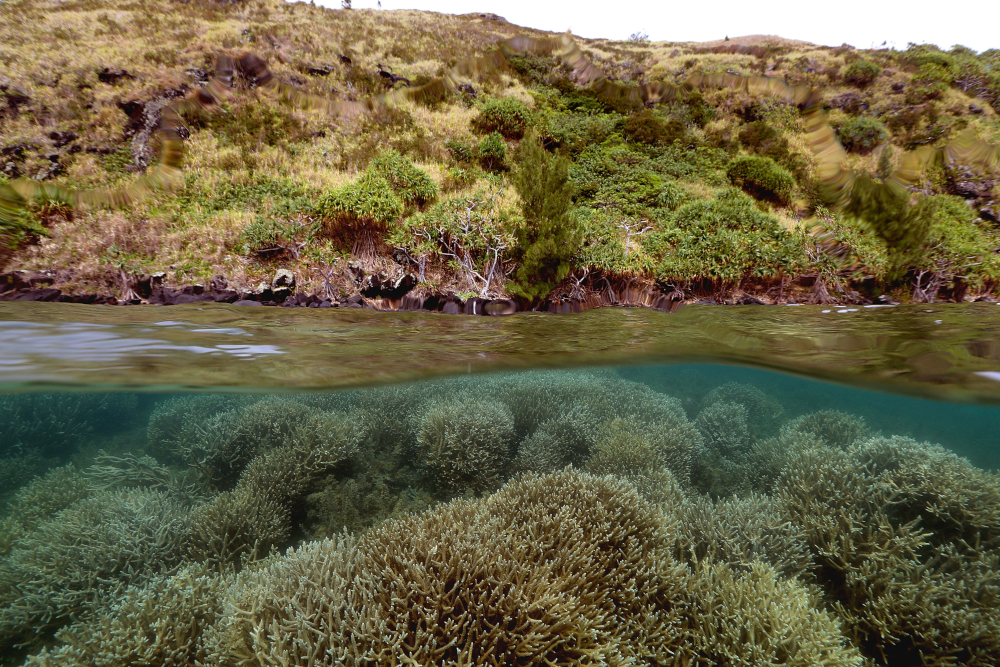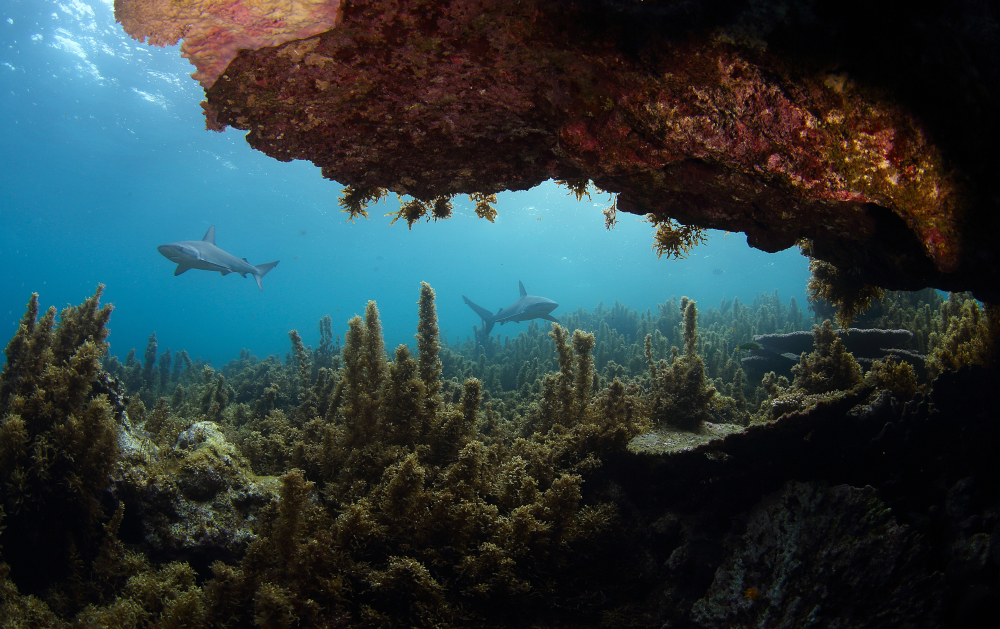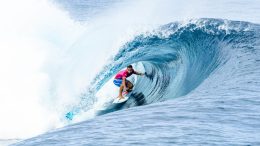I will never forget my first time paddling out at Teahupo’o, on the southwestern coast of Tahiti. There, I connected with the ocean in a way I never had before. As the first wave approached, the current began to feel the abrupt reef bottom and started to bowl into the iconic, perfect wave that we now find so familiar.
My first thought, humbled by the wave’s size and power, was “absolutely not!” I wasn’t even going to try and paddle for that thing. It was too fast, too steep, it seemed insurmountable.
It took hours in the lineup to feel more comfortable. Even then I remained timid.
But the longer I stayed out there, the more that magical place revealed itself — the stunning reef, the humpback whales breaching offshore, the majestic mountains rising above the sea behind the town. As I became more comfortable and took in everything around me, I began to feel like it was something that I could do and be a part of.
Some of the most ferocious and formidable waves on Earth challenged surfers during the Olympic Games this year. And the nonsurfing world was introduced to the French Polynesian village of Teahupo’o — a place of amazing natural beauty and unbelievable waves.

But they may not have also realized that Teahupo’o is experiencing the stress being felt across the world’s oceans. Destructive human activities are intensifying, draining marine ecosystems of their resources and leaving the future in doubt.
A Wave of Destruction
At times the list of threats can feel like I did when I first paddled into the lineup — that the problems are overwhelming and insurmountable:
-
- Overfishing is draining the ocean of its biodiversity. We’re losing species at every part of the food chain, including the apex predators critical to keeping the ocean healthy. Five of the most common reef sharks, for example, have experienced population declines of up to 73%.
- Bottom trawling, a particularly destructive fishing practice, drags large nets across the ocean floor, ensnaring everything in their paths, clearcutting entire ecosystems, and releasing as much carbon into the atmosphere as the entire international aviation industry.
- As those greenhouse gases increasingly heat up the Earth’s surface, ocean temperatures are also increasing. This has resulted in a global coral bleaching event that’s devastating marine ecosystems already hammered by overfishing and bottom trawling.
- New threats like deep-sea mining are emerging as industrial activities extend to locations and environments on the planet that were previously out of reach.
But if we take a moment to observe the ocean around us and listen to the people who have lived alongside and conserved the ocean for generations, there’s an obvious solution to these problems: Marine Protected Areas, a conservation tool that sets aside rich ocean habitats so biodiversity can flourish and recharge the overexploited areas in the vicinity.
A Swell of Protection
Tahiti is home to one of the world’s largest coral reefs, composed of rose-shaped corals that grow up to six feet wide and 100 feet in depth. The country’s waters are bursting with colorful, unique corals that provide shelter to sea creatures and absorb carbon to help mitigate global warming. But these reefs lack the safety of a marine protected area.
Nearby, though, local children eager to protect their ocean helped to establish the Marquesas Educational Managed Marine Area, which is governed by rules that safeguard these volcanic islands’ reefs from damaging human activities. It also serves as a source of education for students interested in studying the ocean.
Pacific Islanders, who have a long history of living intertwined with the ocean, have led in establishing effective Marine Protected Areas and other unique conservation strategies.

Partnering with the PEW Charitable Trusts and CRIOBE (Centre de Recherche Insulaire et Observatoire de L’Environnement) on the expedition, the team produced new data and visuals that allow people around the world to know for themselves the beauty and value of this remote and barely touched region.
For example, in 2022 the government of Niue implemented a plan to manage 100% of their waters. Fishing is allowed in 60% of them — as long as it’s done sustainably. The rest makes up the Moana Mahu Marine Protected Area. There all human activity is banned, including fishing, seabed mining, and oil exploration and extraction.
Protection of the Southern Line Islands enabled its spectacular reefs to bounce back from a devastating ocean warming event. We have seen through our own research expeditions to the area how the coral reefs and the life they support have thrived.
And we expect more announcements about Marine Protected Areas, not just from the Pacific, but from across the globe, including South America and Europe. A major gathering on biodiversity taking place in Colombia in October will provide the world with an opportunity to take stock of how much of the ocean has been protected.
The goal is to safeguard 30% by 2030 — and not just any 30%, but the stretches of ocean that deliver the greatest biodiversity and climate benefits. It’s ambitious but attainable. Leadership in the Pacific is giving us the greatest hope.
Simply establishing Marine Protected Areas isn’t enough, of course — true safeguards must be in place to ensure that destructive activities such as bottom trawling cease in these zones.
As Goes Tahiti, So Goes the World?
There’s more to Tahiti, French Polynesia, and the Pacific region than beautiful coral reefs and inspirational surfing. The Olympics provided an opportunity to showcase all that’s beautiful in the Pacific — not just the islands but their marine ecosystems, protected areas, and traditional approach to conservation. If the rest of the world fails to protect its vital ecosystems, there soon will be nothing left except highlight videos of the surfing that once was.
In the same way I learned from observing Olympic athletes tackle the intimidating waves at Teahupo’o, we can all learn to consider the lessons of generations of Pacific Island conservation practices and marry that cultural knowledge with science to make important changes that could have profound impacts on our oceans.
The opinions expressed above are those of the author and do not necessarily reflect those of The Revelator, the Center for Biological Diversity or their employees.



